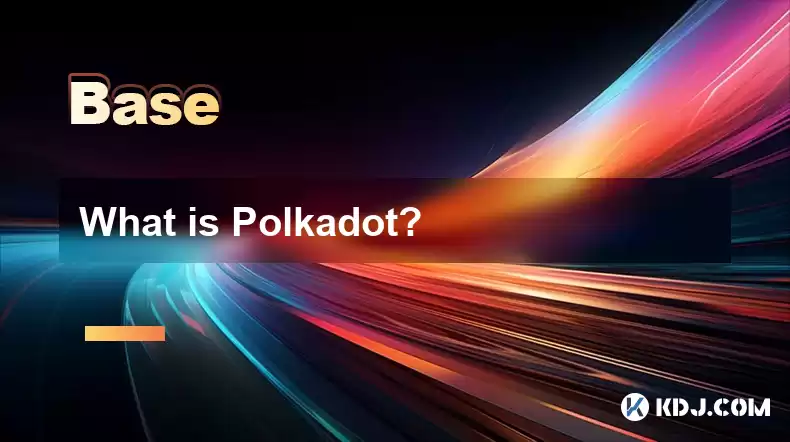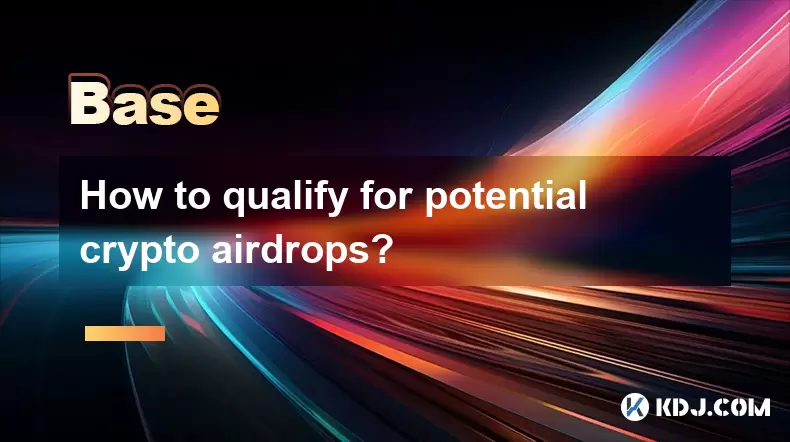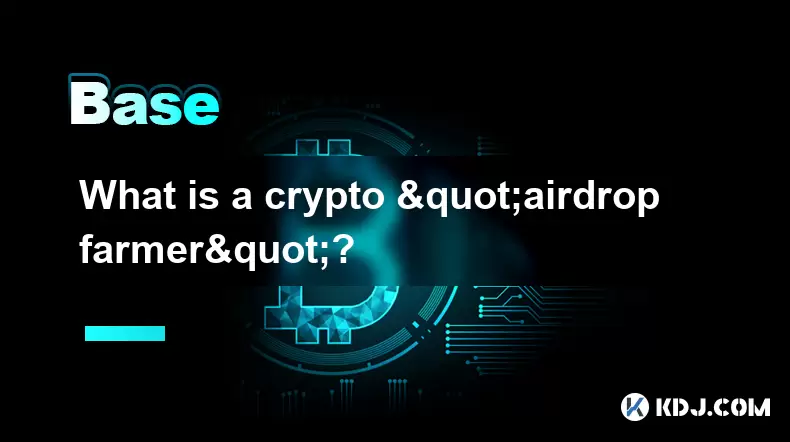-
 Bitcoin
Bitcoin $115200
-2.62% -
 Ethereum
Ethereum $3616
1.07% -
 XRP
XRP $3.063
0.34% -
 Tether USDt
Tether USDt $1.000
-0.07% -
 BNB
BNB $759.1
0.49% -
 Solana
Solana $176.7
-3.61% -
 USDC
USDC $1.000
0.01% -
 Dogecoin
Dogecoin $0.2253
-2.94% -
 TRON
TRON $0.3143
2.94% -
 Cardano
Cardano $0.7940
1.65% -
 Hyperliquid
Hyperliquid $42.07
-0.47% -
 Stellar
Stellar $0.4139
0.20% -
 Sui
Sui $3.638
0.33% -
 Chainlink
Chainlink $17.42
-1.28% -
 Bitcoin Cash
Bitcoin Cash $524.4
4.55% -
 Hedera
Hedera $0.2365
-0.41% -
 Avalanche
Avalanche $23.04
-0.56% -
 Litecoin
Litecoin $111.3
1.30% -
 UNUS SED LEO
UNUS SED LEO $8.965
-0.37% -
 Shiba Inu
Shiba Inu $0.00001329
-0.48% -
 Toncoin
Toncoin $3.089
-0.70% -
 Ethena USDe
Ethena USDe $1.001
-0.05% -
 Polkadot
Polkadot $3.933
-1.40% -
 Uniswap
Uniswap $9.946
0.42% -
 Monero
Monero $322.6
2.58% -
 Dai
Dai $0.9999
-0.01% -
 Bitget Token
Bitget Token $4.442
-2.39% -
 Pepe
Pepe $0.00001198
-2.43% -
 Aave
Aave $285.4
0.72% -
 Cronos
Cronos $0.1292
6.51%
What is Polkadot?
Polkadot's decentralized platform and interoperable architecture enable seamless collaboration and value exchange across disparate blockchain networks.
Feb 15, 2025 at 11:48 am

Understanding Polkadot: A Comprehensive Guide
Key Points:
- Definition: Polkadot is a decentralized platform that enables the interoperability of blockchain networks.
- History: Founded in 2016, Polkadot has experienced significant growth and popularity in the cryptocurrency community.
- Technology: Polkadot utilizes a unique architecture that consists of a relay chain and multiple parachains.
- Governance: Polkadot employs a robust governance system that empowers its stakeholders to guide the network's development and evolution.
- Use Cases: Polkadot's interoperability allows for a wide range of applications, including cross-chain transactions, decentralized finance (DeFi), and interoperability with legacy systems.
- Community: Polkadot has a thriving and active community that contributes to its development and adoption.
- Token Economics: The DOT token is the native utility token of Polkadot and serves various functions within the network.
What is Polkadot?
Polkadot is a decentralized blockchain platform designed to provide interoperability among different blockchains. Its primary objective is to facilitate seamless communication and collaboration between various blockchain networks, enabling the exchange of value and information across these platforms.
History of Polkadot
The concept of Polkadot was first proposed by Gavin Wood, one of the co-founders of Ethereum, in 2016. In 2017, the Polkadot Foundation was established to support the development and governance of the network. Polkadot's mainnet was launched in 2020, marking a significant milestone in its growth and evolution.
Polkadot Technology
Polkadot utilizes a unique architecture that consists of two main components:
- Relay Chain: The Relay Chain is the central backbone of Polkadot that provides security, consensus, and interoperability among the parachains.
- Parachains: Parachains are individual blockchain networks that operate alongside the Relay Chain, each with its own governance and consensus mechanisms.
This architecture allows for the creation of a network of interconnected blockchains, where parachains can leverage the security and infrastructure of the Relay Chain while maintaining their own autonomy and functionality.
Polkadot Governance
Polkadot employs a robust governance system that empowers its stakeholders to participate in the decision-making process and guide the network's development. Key elements of the governance system include:
- Council: The Council is an elected body that proposes and votes on changes to the network's protocol and governance model.
- Technical Committee: The Technical Committee reviews and evaluates technical proposals and provides recommendations to the Council.
- Referendum: Stakeholders can directly vote on proposed changes through a referendum system.
Polkadot Use Cases
The interoperability provided by Polkadot opens up a wide range of use cases, including:
- Cross-Chain Transactions: Users can seamlessly transfer assets and information between different blockchains, eliminating the barriers and challenges of isolated blockchain networks.
- DeFi Applications: Polkadot's interoperability enables the development of complex and interoperable DeFi applications that can leverage the capabilities of multiple blockchains.
- Interoperability with Legacy Systems: Polkadot can act as a bridge between blockchains and legacy systems, facilitating the integration of traditional financial systems with blockchain technology.
Polkadot Community
Polkadot has a thriving and active community that contributes to the network's development and adoption. The community includes developers, researchers, businesses, and enthusiasts who collaborate to enhance the platform's capabilities and ecosystem.
Polkadot Token Economics
The DOT token is the native utility token of Polkadot. It serves various functions within the network, including:
- Staking: DOT holders can stake their tokens to participate in the network's consensus mechanism and secure the Relay Chain.
- Governance: DOT holders have voting rights on network proposals and participate in the governance process.
- Transaction Fees: DOT is used to pay transaction fees on the Polkadot network.
FAQs
What is the difference between Polkadot and Cosmos?
Polkadot and Cosmos are both interoperability protocols, but they have distinct approaches and architectures. Polkadot employs a relay chain and parachains, while Cosmos utilizes a hub-and-zone model. Additionally, Polkadot has a more centralized governance structure compared to Cosmos, which prioritizes community governance.
What are the similarities between Polkadot and Ethereum?
Polkadot and Ethereum share some similarities, including the use of smart contract functionality and the ability to create decentralized applications. However, Polkadot focuses primarily on interoperability and cross-chain capabilities, while Ethereum is geared towards executing complex contracts and supporting a wide range of DeFi applications.
Disclaimer:info@kdj.com
The information provided is not trading advice. kdj.com does not assume any responsibility for any investments made based on the information provided in this article. Cryptocurrencies are highly volatile and it is highly recommended that you invest with caution after thorough research!
If you believe that the content used on this website infringes your copyright, please contact us immediately (info@kdj.com) and we will delete it promptly.
- StablecoinX's $360 Million Bet: Forging the Ethena Treasury
- 2025-07-25 15:30:12
- Ethereum's Wild Ride: Navigating Volatility and New Risks
- 2025-07-25 15:10:12
- Ethereum Inflows Outpace Bitcoin Outflows: Institutional Adoption Heats Up
- 2025-07-25 15:30:12
- XRP, Ripple, and Liquidations: Navigating the Crypto Turbulence
- 2025-07-25 15:35:12
- Ethereum vs. Bitcoin: Galaxy CEO Novogratz Weighs In
- 2025-07-25 15:35:12
- Ethereum, Injective, and Tokenizing Treasuries: A New Era for Corporate Finance
- 2025-07-25 15:40:12
Related knowledge

What is the difference between CeFi and DeFi?
Jul 22,2025 at 12:28am
Understanding CeFi and DeFiIn the world of cryptocurrency, CeFi (Centralized Finance) and DeFi (Decentralized Finance) represent two distinct financia...

How to qualify for potential crypto airdrops?
Jul 23,2025 at 06:49am
Understanding What Crypto Airdrops AreCrypto airdrops refer to the distribution of free tokens or coins to a large number of wallet addresses, often u...

What is a crypto "airdrop farmer"?
Jul 24,2025 at 10:22pm
Understanding the Role of a Crypto 'Airdrop Farmer'A crypto 'airdrop farmer' refers to an individual who actively participates in cryptocurrency airdr...

What is the difference between a sidechain and a Layer 2?
Jul 20,2025 at 11:35pm
Understanding the Concept of SidechainsA sidechain is a separate blockchain that runs parallel to the main blockchain, typically the mainnet of a cryp...

What is the Inter-Blockchain Communication Protocol (IBC)?
Jul 19,2025 at 10:43am
Understanding the Inter-Blockchain Communication Protocol (IBC)The Inter-Blockchain Communication Protocol (IBC) is a cross-chain communication protoc...

How does sharding improve scalability?
Jul 20,2025 at 01:21am
Understanding Sharding in BlockchainSharding is a database partitioning technique that is increasingly being adopted in blockchain technology to enhan...

What is the difference between CeFi and DeFi?
Jul 22,2025 at 12:28am
Understanding CeFi and DeFiIn the world of cryptocurrency, CeFi (Centralized Finance) and DeFi (Decentralized Finance) represent two distinct financia...

How to qualify for potential crypto airdrops?
Jul 23,2025 at 06:49am
Understanding What Crypto Airdrops AreCrypto airdrops refer to the distribution of free tokens or coins to a large number of wallet addresses, often u...

What is a crypto "airdrop farmer"?
Jul 24,2025 at 10:22pm
Understanding the Role of a Crypto 'Airdrop Farmer'A crypto 'airdrop farmer' refers to an individual who actively participates in cryptocurrency airdr...

What is the difference between a sidechain and a Layer 2?
Jul 20,2025 at 11:35pm
Understanding the Concept of SidechainsA sidechain is a separate blockchain that runs parallel to the main blockchain, typically the mainnet of a cryp...

What is the Inter-Blockchain Communication Protocol (IBC)?
Jul 19,2025 at 10:43am
Understanding the Inter-Blockchain Communication Protocol (IBC)The Inter-Blockchain Communication Protocol (IBC) is a cross-chain communication protoc...

How does sharding improve scalability?
Jul 20,2025 at 01:21am
Understanding Sharding in BlockchainSharding is a database partitioning technique that is increasingly being adopted in blockchain technology to enhan...
See all articles

























































































